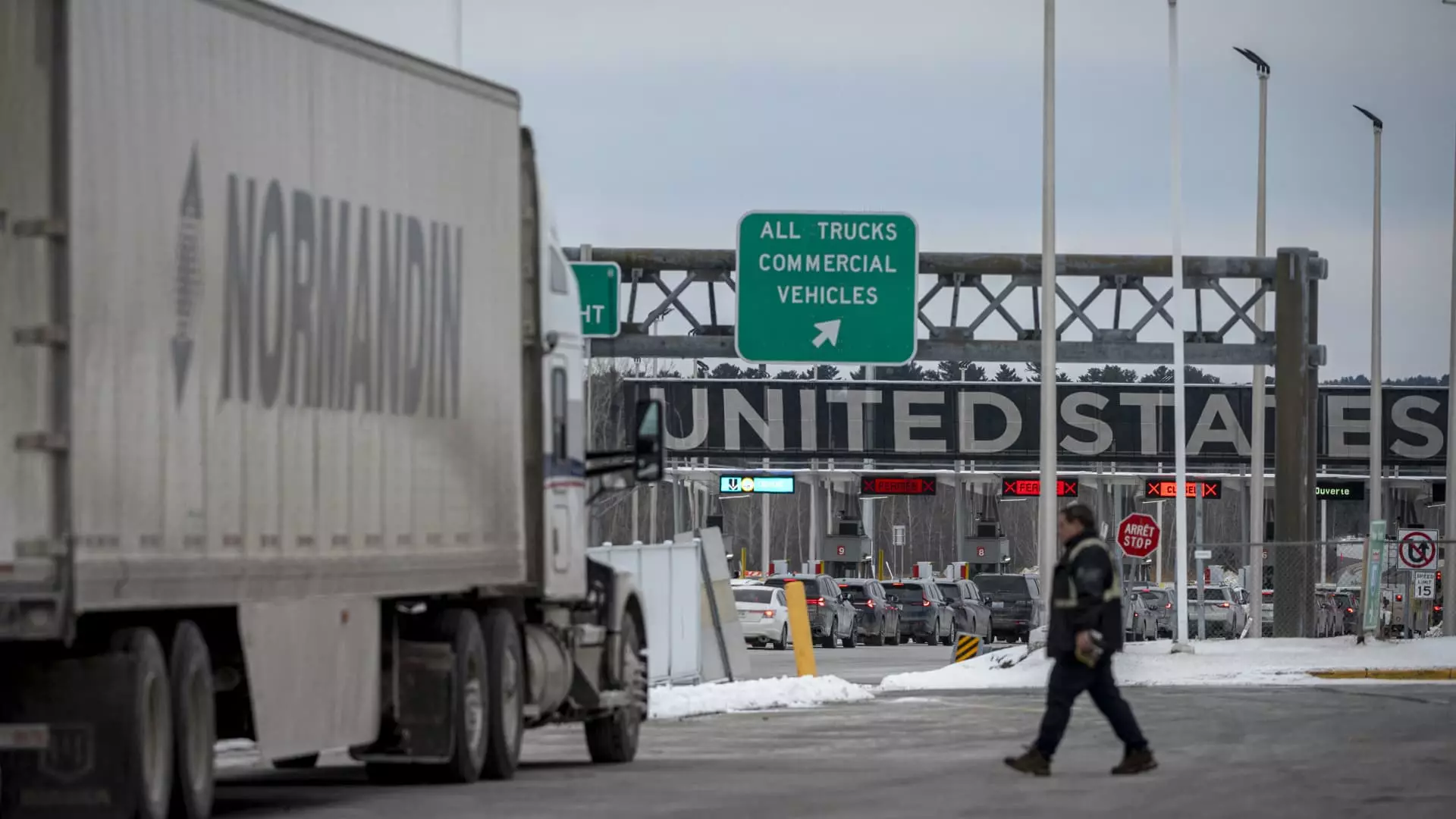Recent developments in trade policy have sparked significant concern among economists regarding the implications for consumers and national economic health. Following President Donald Trump’s recent orders imposing tariffs on pivotal trading partners, including Canada and Mexico at 25%, and China at 10%, a consensus is forming among economic experts: American consumers might not find relief from persistently high borrowing costs any time soon. Rather than tempering inflation, these tariffs are projected to exacerbate it, compelling the Federal Reserve (Fed) to reconsider its plans for interest rate adjustments.
The rationale behind imposing such tariffs often stems from the purported benefits of protecting domestic industries. However, the complexities of international trade suggest that the consequences could ricochet back to U.S. consumers in the form of rising prices and sustained economic strain. As anticipated, these tariffs are set to make their way into the economy as early as this Tuesday, and the potential trajectory is worrying.
Analysts predict that the tariffs, if upheld over time, will increase inflation pressure throughout the U.S. economy. Specifically, estimates indicate a potential uptick in inflation by about 0.5 to 1 percentage points through 2026. This scenario emerges particularly concerning because inflation rates have thus far failed to stabilize within the Fed’s target range. With inflation inching upwards, there is mounting pressure on consumers who are already grappling with high borrowing costs linked to credit cards and various loans.
This inflationary scenario has profound implications for the Fed’s interest rate strategy. Historically, the Fed utilizes interest rates as a lever to manage inflationary trends and promote stability within the labor market. Consequently, the rising price levels anticipated from implemented tariffs make it increasingly improbable for the Fed to move forward with expected interest rate cuts over the next year and a half.
The economic landscape remains incredibly fluid, leading to uncertainty in market reactions and ultimate policy outcomes. For instance, President Trump recently opted to delay the controversial 25% tariff on Mexico following an agreement to bolster border security. This kind of back-and-forth with tariff enactments exemplifies the unpredictable nature of trade negotiations and their direct influence on investor sentiment and consumer behavior.
Susan Collins, president of the Federal Reserve Bank of Boston, highlights the inherent unpredictability within the policy landscape, underscoring a lack of clarity about future budgetary consequences on domestic and international fronts. As tariffs come and go, and negotiations continue to evolve, economists must grapple with a myriad of possibilities that complicate definitive forecasts.
Indeed, the anticipated tariffs’ impact on inflation is significant, with reports suggesting that they could raise core inflation rates to approximately 2.8% by late 2025. Such increases could force the Fed to halt interest rates cuts, a pivotal factor as the economy battles the dual threats of inflationary pressure and stunted growth.
In complicating matters further, J.P. Morgan projects that the same tariffs could dampen GDP growth by 0.5 to 1 percentage point through 2026, presenting a conundrum for policymakers. The anticipated drag on economic growth may counterbalance the upward inflationary pressures, leading to a nuanced and complex response from the Fed—where standard tools may not yield straightforward results.
As tariffs loom on the horizon, the American consumer faces an uncertain financial landscape characterized by high borrowing costs and inflationary pressures. The interplay between escalating tariffs, inflation, and the Fed’s potential responses can lead to a challenging economic environment. As events unfold, both policymakers and consumers must remain vigilant in navigating this intricate web of economic factors, balancing aggressive trade policies with the fundamental need for stability and growth in the broader economy. Understanding these dynamics is crucial for preparing for the potential challenges ahead, as the repercussions of trade decisions will ripple through various facets of the economy and consumer life in the years to come.

